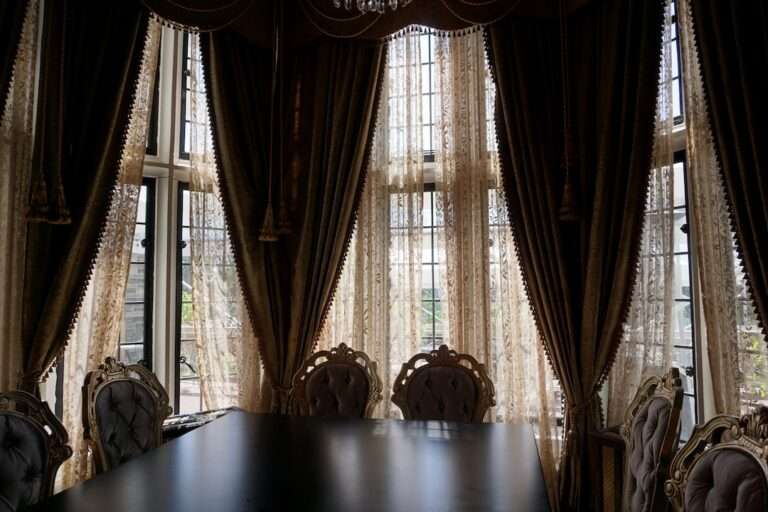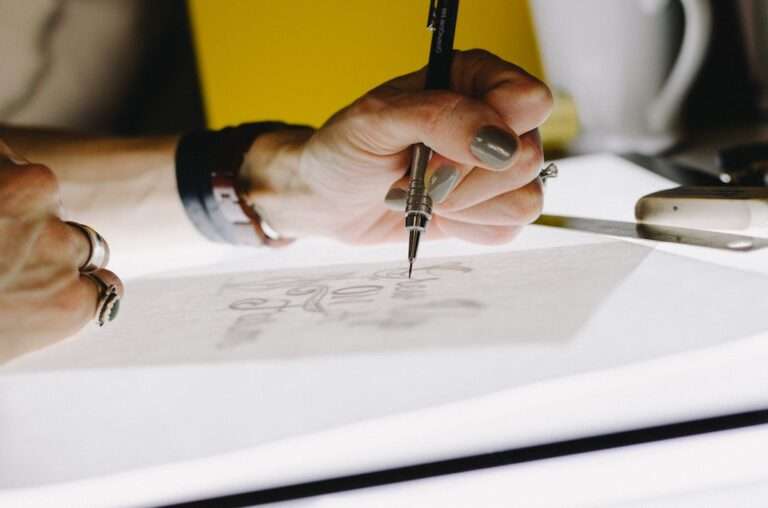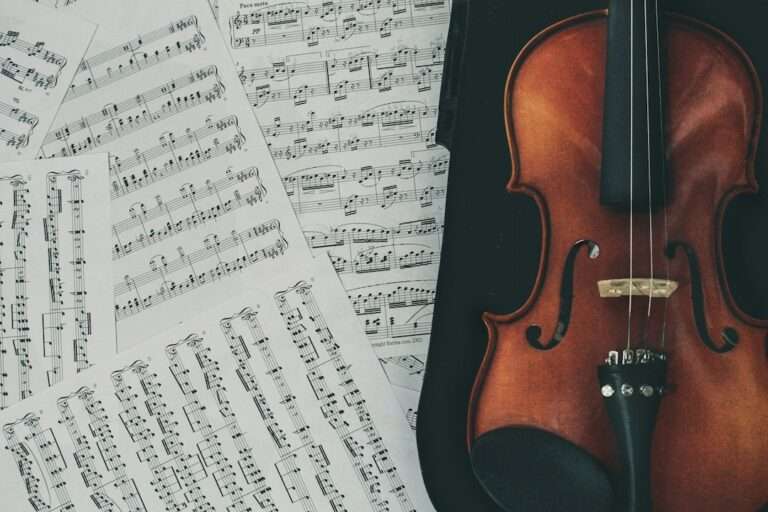Tarot Symbolism – The A to Z Guide

Tarot cards have a rich history that dates back to the 15th century. Originally used as playing cards in Europe, they eventually evolved into a tool for divination and self-reflection. Tarot symbolism is a key aspect of understanding and interpreting the cards. Each card is filled with symbols, images, and colors that hold deep meaning and significance.
The symbols in tarot cards are not arbitrary; they have been carefully chosen to represent various aspects of life, spirituality, and human experience. For example, the Fool card often depicts a figure stepping off a cliff, symbolizing taking risks and embracing the unknown. The High Priestess card often shows a woman sitting between two pillars, representing intuition and hidden knowledge.
Understanding tarot symbolism is crucial for anyone who wants to read tarot cards effectively. By deciphering the symbols and their meanings, readers can gain insight into their own lives and the lives of others. Tarot symbolism allows us to tap into our subconscious mind and access deeper levels of understanding and wisdom.
The Major Arcana: Understanding the 22 Cards
The major arcana is made up of 22 cards that represent significant life events and archetypal energies. Each card has its own unique symbolism and interpretation. The major arcana begins with the Fool card, representing new beginnings and taking risks, and ends with the World card, symbolizing completion and fulfillment.
Each card in the major arcana tells a story and carries a specific message. For example, the Magician card represents manifestation and using one’s skills and resources to create change. The Death card symbolizes transformation and letting go of old patterns or beliefs.
Common themes and symbols can be found throughout the major arcana. For example, many cards feature figures wearing robes or crowns, representing authority or spiritual power. Animals such as lions or eagles often appear in cards, symbolizing strength and courage.
The Minor Arcana: Decoding the Suits and Numbers
The minor arcana consists of four suits: wands, cups, swords, and pentacles. Each suit represents a different aspect of life and carries its own set of meanings. The wands suit represents passion, creativity, and action. The cups suit represents emotions, relationships, and intuition. The swords suit represents thoughts, communication, and challenges. The pentacles suit represents material possessions, abundance, and practicality.
In addition to the suits, the numbers in the minor arcana also hold significance. Each number represents a different stage or energy. For example, the Ace represents new beginnings and potential, while the Ten represents completion and fulfillment.
By understanding the suits and numbers in the minor arcana, readers can gain deeper insight into specific areas of life and navigate challenges or opportunities more effectively.
The Court Cards: Interpreting the People in Tarot
The court cards in tarot represent different personality types or archetypes. They often depict people in various roles or positions of power. The court cards include the King, Queen, Knight, and Page for each suit.
Each court card has its own unique interpretation. For example, the King of Wands represents a charismatic leader or visionary, while the Queen of Cups represents a nurturing and intuitive individual. The Knight of Swords represents a driven and ambitious person, while the Page of Pentacles represents a curious and eager learner.
When reading court cards in a spread, it is important to consider their position and relationship to other cards. They can represent people in the querent’s life or aspects of their own personality that need attention or development.
The Elements: Fire, Water, Air, and Earth in Tarot
The four elements – fire, water, air, and earth – play a significant role in tarot symbolism. Each element is associated with a specific suit and carries its own set of meanings.
Fire represents passion, creativity, and action. It is associated with the suit of wands. Water represents emotions, intuition, and relationships. It is associated with the suit of cups. Air represents thoughts, communication, and challenges. It is associated with the suit of swords. Earth represents material possessions, abundance, and practicality. It is associated with the suit of pentacles.
By understanding the elements in tarot, readers can gain a deeper understanding of the energy and dynamics at play in a reading. The elements can also provide guidance on how to navigate challenges or make decisions.
Numerology in Tarot: Meaning of Numbers in Cards

Numerology is the study of numbers and their symbolic meanings. In tarot, each number carries its own significance and interpretation.
The Ace represents new beginnings and potential. The Two represents balance and partnership. The Three represents creativity and expansion. The Four represents stability and structure. The Five represents change and challenges. The Six represents harmony and cooperation. The Seven represents introspection and spirituality. The Eight represents power and abundance. The Nine represents completion and fulfillment. The Ten represents completion and new cycles.
By understanding the numerology in tarot, readers can gain deeper insight into the energy and themes present in a reading. Numerology can also provide guidance on timing or the progression of events.
Colors in Tarot: Significance of Hues in Cards
Colors play a significant role in tarot symbolism. Each color carries its own meaning and can provide insight into the energy or message of a card.
For example, red often represents passion, energy, or action. Blue often represents calmness, intuition, or spirituality. Yellow often represents joy, optimism, or intellect. Green often represents growth, abundance, or healing.
By paying attention to the colors in tarot cards, readers can gain a deeper understanding of the emotions, energies, or themes present in a reading. Colors can also provide guidance on how to navigate challenges or embrace opportunities.
Animals in Tarot: What Do They Represent?
Animals are often depicted in tarot cards and carry their own symbolic meanings. Each animal represents different qualities or energies.
For example, the lion often represents strength, courage, or leadership. The owl often represents wisdom, intuition, or hidden knowledge. The butterfly often represents transformation, growth, or freedom. The snake often represents transformation, healing, or rebirth.
By understanding the symbolism of animals in tarot, readers can gain deeper insight into the energies or qualities present in a reading. Animals can also provide guidance on how to tap into certain strengths or navigate challenges.
Symbols in Tarot: Understanding Their Meanings
Symbols are a key aspect of tarot cards and carry their own meanings and interpretations. Symbols can be found throughout the cards and can provide insight into various aspects of life or human experience.
For example, a key symbol often represents unlocking hidden knowledge or opportunities. A crown symbol often represents authority or spiritual power. A heart symbol often represents love or emotional connection. A sun symbol often represents vitality or enlightenment.
By understanding the symbols in tarot, readers can gain deeper insight into the messages or energies present in a reading. Symbols can also provide guidance on how to approach certain situations or make decisions.
Tarot Spreads: How to Read Symbolism in a Spread
Tarot spreads are layouts of cards that provide guidance and insight into specific areas of life or questions. Each card in a spread carries its own symbolism and interpretation.
When reading symbolism in a spread, it is important to consider the position and relationship of each card. The cards interact with each other and create a narrative or story.
For example, a spread may have a card representing the past, one representing the present, and one representing the future. The symbolism in each card can provide insight into the progression or energy of a situation.
By reading symbolism in a spread, readers can gain a deeper understanding of the messages or energies present in a reading. Tarot spreads can provide guidance, clarity, and support in navigating life’s challenges and opportunities.
Conclusion:
Understanding tarot symbolism is crucial for anyone who wants to read tarot cards effectively. Tarot cards are filled with symbols, images, and colors that hold deep meaning and significance. By deciphering the symbols and their meanings, readers can gain insight into their own lives and the lives of others.
The major arcana, minor arcana, court cards, elements, numerology, colors, animals, and symbols all play a significant role in tarot symbolism. Each aspect provides a unique perspective and adds depth to a reading.
Tarot spreads are a powerful tool for reading symbolism in a spread. By considering the position and relationship of each card, readers can gain a deeper understanding of the messages or energies present in a reading.
As with any skill, understanding tarot symbolism takes time and practice. It is important to continue learning and exploring the rich world of tarot to deepen your understanding and enhance your readings. Tarot symbolism is a powerful tool for self-reflection, guidance, and personal growth.
If you’re fascinated by Tarot symbolism and want to delve deeper into its meanings, you won’t want to miss the article “The Sun: Symbolism and Interpretation” from Symbolism Hub. This comprehensive guide explores the significance of the sun in various cultures and belief systems, shedding light on its symbolism in Tarot readings. Discover how the sun represents vitality, enlightenment, and personal growth, and how it can influence your understanding of Tarot cards. To explore this enlightening article further, click here.
FAQs
What is Tarot Symbolism?
Tarot Symbolism is the use of symbols and images on Tarot cards to convey meaning and insight into a person’s life. It is a tool used for divination and self-discovery.
What is the A to Z Guide?
The A to Z Guide is a comprehensive guide that covers all the major symbols and meanings found in Tarot cards. It is a useful resource for beginners and experienced Tarot readers alike.
What are Tarot cards?
Tarot cards are a deck of 78 cards that are used for divination and self-discovery. Each card has a unique image and meaning that can be interpreted in different ways.
What is the history of Tarot cards?
The history of Tarot cards is unclear, but they are believed to have originated in Italy in the 15th century. They were originally used for playing games, but later became associated with divination and self-discovery.
What are the major Arcana cards?
The major Arcana cards are the 22 cards in a Tarot deck that represent major life events and themes. They include cards such as The Fool, The Magician, The High Priestess, The Empress, The Emperor, The Hierophant, The Lovers, The Chariot, Strength, The Hermit, Wheel of Fortune, Justice, The Hanged Man, Death, Temperance, The Devil, The Tower, The Star, The Moon, The Sun, Judgement, and The World.
What are the minor Arcana cards?
The minor Arcana cards are the 56 cards in a Tarot deck that represent everyday events and themes. They are divided into four suits: Wands, Cups, Swords, and Pentacles. Each suit has 14 cards, including Ace through 10, and four court cards: Page, Knight, Queen, and King.
What is the meaning of the Fool card?
The Fool card represents new beginnings, taking risks, and living in the moment. It can also represent naivety, impulsiveness, and unpredictability.
What is the meaning of the Death card?
The Death card represents transformation, change, and the end of a cycle. It can also represent loss, grief, and letting go of the past.
What is the meaning of the Tower card?
The Tower card represents upheaval, chaos, and sudden change. It can also represent the breaking down of old structures and beliefs to make way for new growth and transformation.
What is the meaning of the Sun card?
The Sun card represents joy, happiness, and success. It can also represent vitality, energy, and optimism.
How can Tarot Symbolism be used for self-discovery?
Tarot Symbolism can be used for self-discovery by reflecting on the images and meanings of the cards and how they relate to your life. It can help you gain insight into your thoughts, feelings, and behaviors, and provide guidance for making decisions and navigating life’s challenges.





